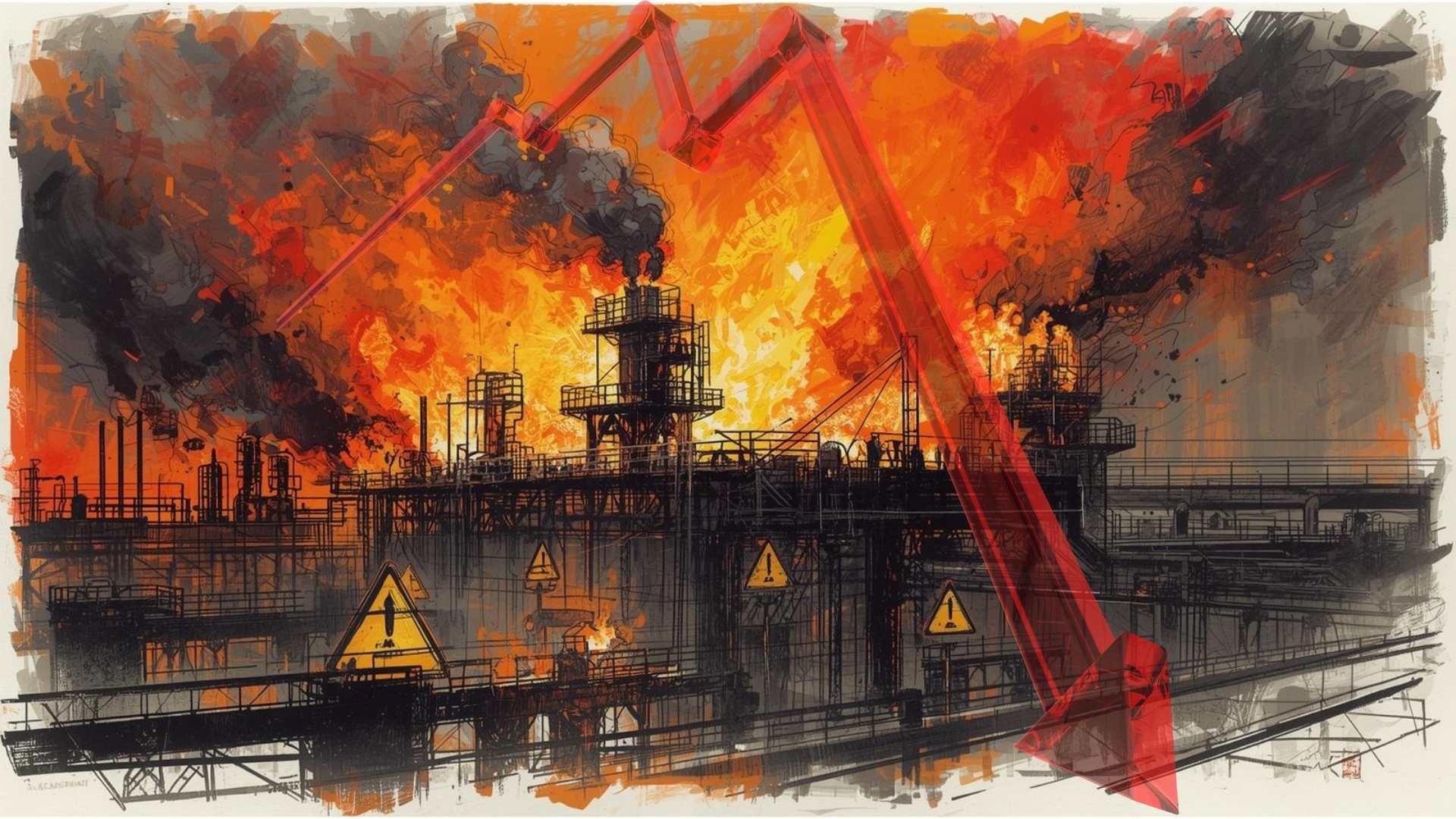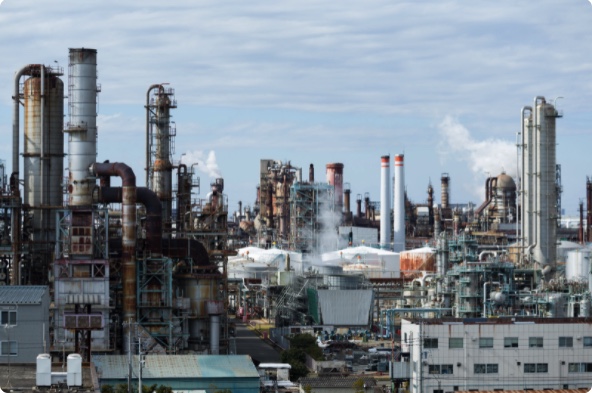
Investor risks continue with BlackRock’s Rio Grande LNG
October 7, 2025
Investor risks continue in BlackRock-owned GIP’s Rio Grande Liquefied Natural Gas development
While BlackRock’s Global Infrastructure Partners has announced a significant additional investment in the Rio Grande liquefied natural gas (LNG) terminal in South Texas, investor risk in the project remains, and not all companies are on board. TotalEnergies, a current investor, reportedly will not invest further in the project.
Despite previous investment in Rio Grande LNG’s Train 4, Reuters cites two sources familiar with the matter who say that TotalEnergies does not plan further investment in the project. On August 7, 2025 BlackRock-owned Global Infrastructure Partners (GIP) and TotalEnergies, a French multinational energy company, committed to invest in Train 4 of the Rio Grande liquefied natural gas project. TotalEnergies will invest about $300 million for a 10% equity interest in Train 4, and GIP will invest up to $1.5 billion for a 50% equity interest, which will decrease to a 30% stake once certain returns are met. The remainder of the investment – up to $1.2 billion for a 40% interest – will be funded through NextDecade’s subsidiaries, according to the company.
In February 2025 TotalEnergies CEO, Patrick Pouyanne, had expressed interest in investing in Rio Grande LNG Trains 5, 6, and 7. However, by early August Reuters reported, based on two sources “familiar with the matter,” that TotalEnergies had decided not to invest in a fifth LNG facility or purchase its LNG, stating that the company was prioritizing lower-cost LNG development elsewhere. TotalEnergies declined to comment for the article.
Other companies have declined further involvement with the Rio Grande LNG project. Financial institutions including Societe Generale, BNP Paribas, and La Banque Postale have left the project, and an insurance statement indicated that CHUBB was no longer insuring the project as of April 2024. XRG, the global investment arm of Abu Dhabi National Oil Co (ADNOC), solidified its purchase of an 11.7 percent stake in Phase 1 of the project at the end of September 2025. The deal was first announced in May 2024 and grants a portion of GIP’s existing stake in Rio Grande LNG to XRG. It also marks the United Arab Emirates’ new firm its first gas infrastructure investment in the United States.
There are several reasons companies and investors may want to limit their exposure to the Rio Grande LNG project.
Risks associated with tariffs
Investors may be concerned about the risks to U.S. LNG developers that are represented by tariffs. While it remains to be seen how trade wars may affect natural gas markets, Argus reporting indicates that tariffs on aluminum and steel imports to the U.S. will impact construction costs and projects that are still being built, such as Rio Grande LNG. “NextDecade’s 17.4mn t/yr Rio Grande LNG project in south Texas had bought only 69% of supplies for trains 1-2 and only 33% for train 3 by late February, making the three-train project particularly vulnerable to higher steel prices.”
Possible glut of LNG on the international market
Additionally, an August 6, 2025 Reuters article described the financial challenges facing the project as not just about construction costs for the facility, but also about market demand for the resulting products: “NextDecade is contending with rising construction costs due to U.S. steel tariffs, stiff competition from U.S. rival Venture Global, and a projected global LNG supply glut that could depress prices from 2027.” Trains 1-3 are expected to begin exporting LNG in 2027, with future trains to follow.
A July 2025 Politico article outlines the risks of oversupply of LNG for export from the U.S.:
“More and more LNG terminals are planned. Since 2015, LNG imports to Central and Eastern European countries have increased 12 times over, according to the Ember think tank. In the next five years, terminal capacity in the region will double, with more under discussion. The analysts warn that supply capacity could quickly outstrip demand, which is declining.”
The think tank Ember describes how supply in “3SI” countries – Central and Eastern European countries – could exceed demand. “According to energy system planning scenarios from European power grid operators (ENTSO-E), total gas demand in 3SI countries is expected to decrease by 2030. Across 3SI members, the sum of domestic production and gas import capabilities through LNG terminals and pipelines from North and South directions will exceed demand by 40%.” In the European Union more broadly, buyers have refused to sign long-term contracts with U.S. LNG companies due to a combination of declining natural gas demand and supply from other exporters such as those in Norway and Qatar.
GIP claims sustainability while investing in fossil fuel infrastructure
BlackRock’s GIP asserts that it focuses on the energy transition away from climate change-causing fossil fuels, stating on its website, “We aspire to be one of the world’s leading owners, developers, and operators of renewable energy assets, in line with GIP’s commitment to facilitating the global energy transition.”
In a February 2023 presentation to investors about Fund V, GIP led investors to believe that the fund would be an environmentally friendly investment through language and images highlighting renewable renewable energy. The GIP presentation names “Energy Transition” as a fund highlight in the executive summary and states that the fund will have a “Decarbonization theme applied across sectors”. The investor presentation also claims that “GIP V will be designated as an Article 8 SFDR fund”. Article 8 funds promote environmental or social characteristics.
Despite implying that Fund V would be focused on sustainability, BlackRock’s GIP has used that fund to commit up to $5 billion to Rio Grande LNG and is the largest owner of the project. BlackRock has also announced its intention to purchase ALLETE, which would add a coal mine, coal-fired power plants, and natural-gas fired power plants to the firm’s assets. Investors may find such a contradiction in messaging about the fund and its actual investments concerning.
The Rio Grande LNG project is especially challenging to square with GIP’s decarbonization claims. It is estimated to emit the greenhouse gas equivalent of 44 coal power plants every year as originally proposed, and the equivalent of the emissions from 83 coal plants annually if the eight trains currently proposed are all completed. Methane is an extremely potent greenhouse gas. “One 2024 study concludes that LNG has a 33% larger greenhouse gas footprint than coal over 20 years, due in part to methane leakages in the supply chain and energy-intensive processing and shipping.”
NextDecade has continued to promote carbon capture though it withdrew that aspect of the project from regulatory review for Rio Grande LNG
In its original scope of the project, NextDecade proposed carbon capture and sequestration (CCS) as part of the Rio Grande LNG facility. The company said that it had “chosen carbon capture and storage (CCS) as the most feasible technical solution to reduce CO2 equivalent emissions at the Rio Grande LNG.” Until April 11, 2025, NextDecade described the project on its website by stating: “Rio Grande LNG is the FIRST AND ONLY U.S. LNG project offering CO2 emissions reduction of more than 90 percent via proposed carbon capture and storage” (emphasis in original).
However, in August 2024, NextDecade CEO, Matt Schatzman announced that the company was withdrawing its application for the CCS project from Federal Energy Regulatory Commission (FERC) approval process, saying, “The CCS project at [Rio Grande LNG] is not sufficiently developed to allow FERC review to continue at this time.” It may be confusing to some investors that, as of September 9, 2025, NextDecade still was describing LNG from Rio Grande as “more sustainable” due to its anticipated “emissions reduction associated with our proposed carbon capture and storage project,” despite having withdrawn its proposal for CCS with FERC.
Local opposition to Rio Grande LNG highlight risks inherent in the project
The nearby towns of Laguna Vista, South Padre Island, and Port Isabel, along with the Laguna Madre Water District, formally oppose the project based on concerns about conflicts of interest, the accuracy of projected jobs numbers, and tax incentives for the companies. The Carrizo Comecrudo Tribe of Texas asserts that the project is being built on its sacred land and has raised numerous concerns over the years. Additionally, the project will likely create negative economic impacts from degrading local fishing, shrimping, and natural tourism industries. Local public opposition to Rio Grande LNG highlights issues with investment in this project.
Investors should ask BlackRock to address community concerns about Rio Grande LNG and economic risks associated with investing in an LNG terminal with rising construction costs and a possible glut of LNG. Additionally, investors should decline to invest further in the project.
